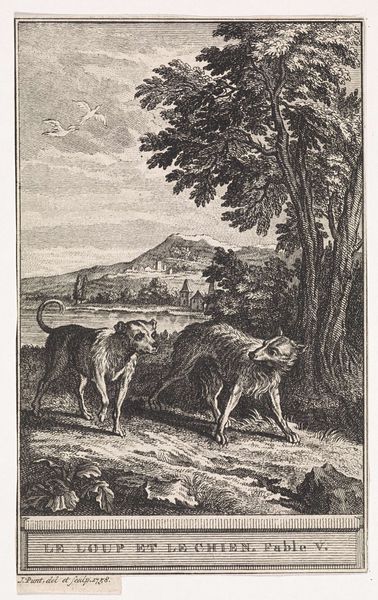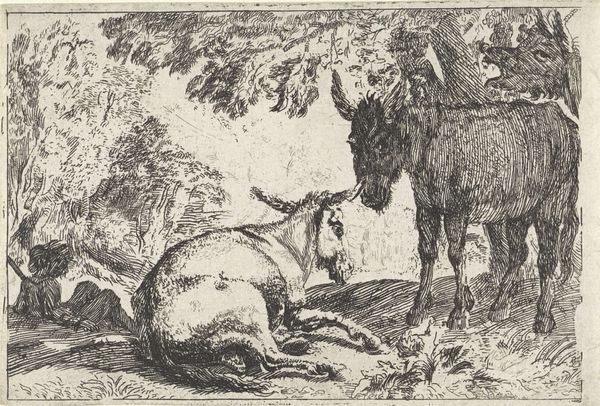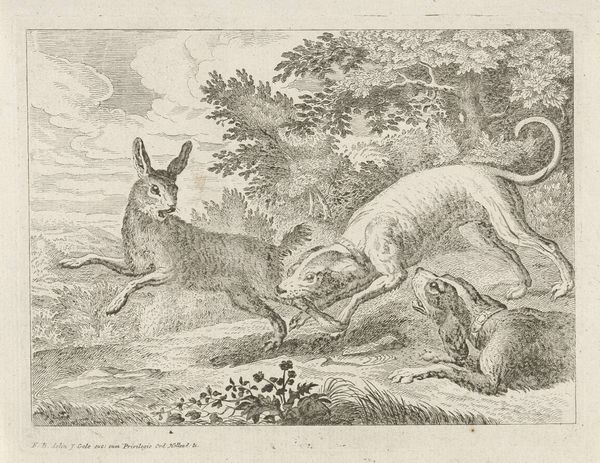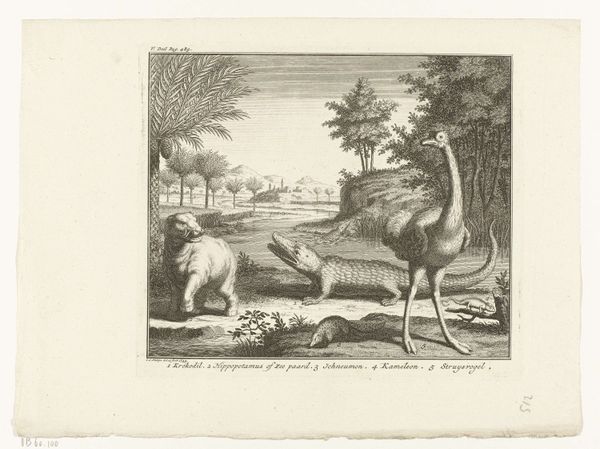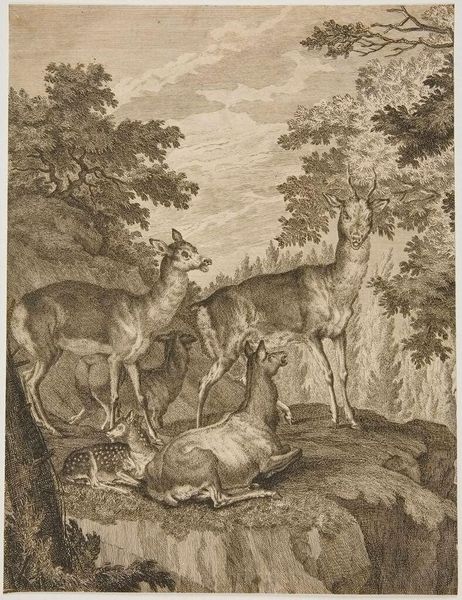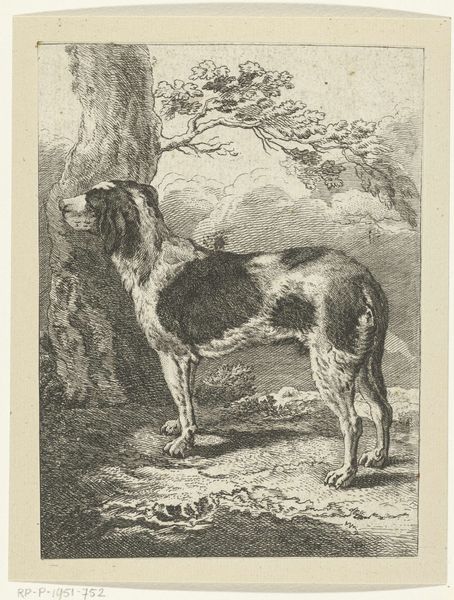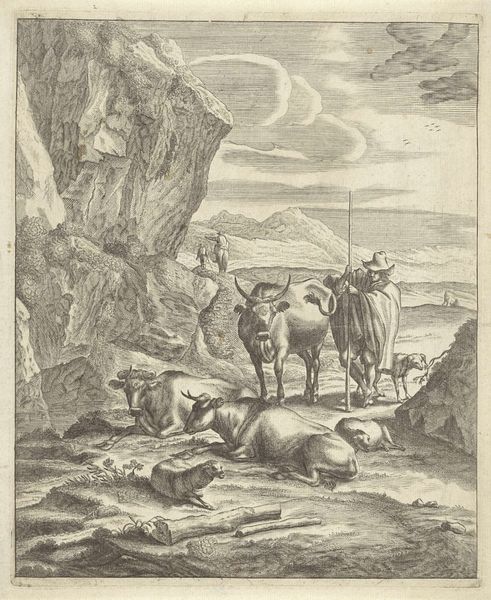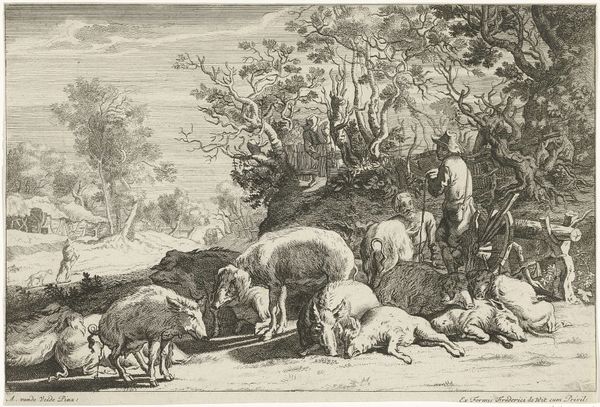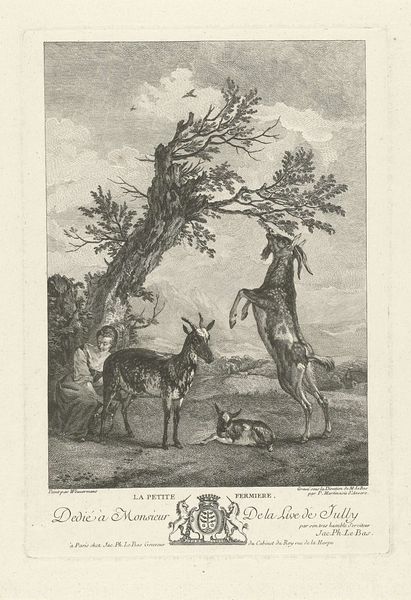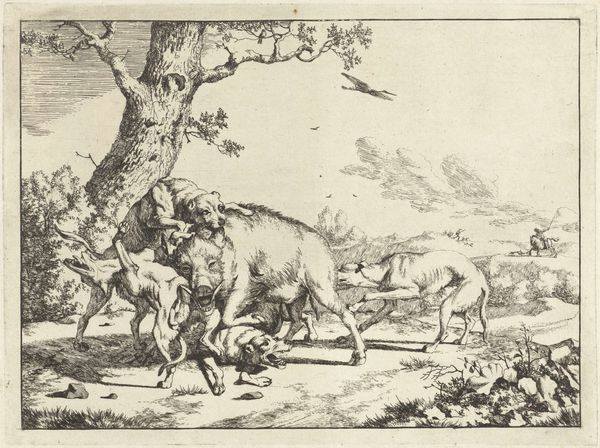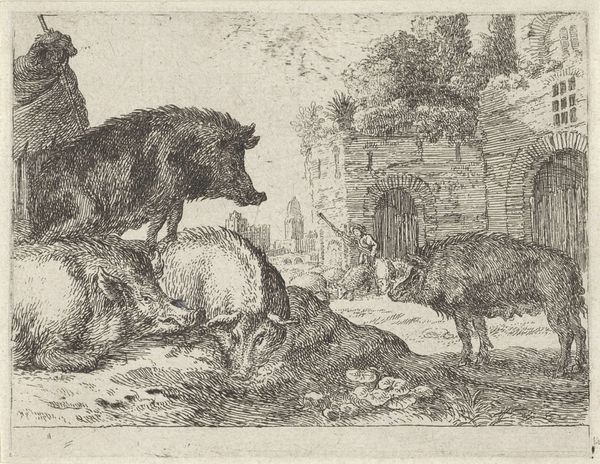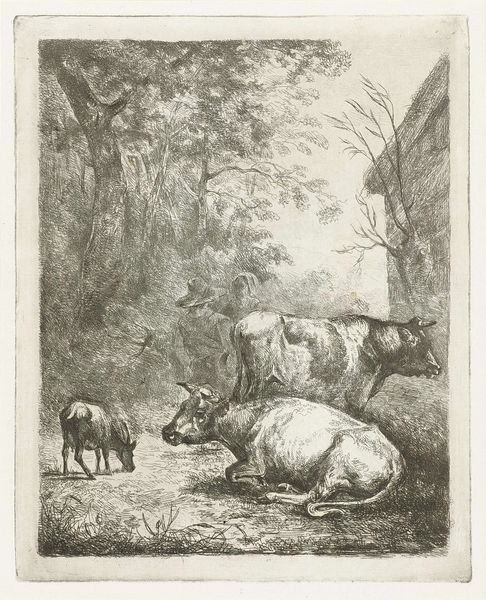
Dimensions: height 145 mm, width 98 mm
Copyright: Rijks Museum: Open Domain
Curator: Here we have “The Wolf and the Lamb” by Abraham Delfos. Created sometime between 1741 and 1820, this engraving presents a classic, fable-like scene. Editor: Oh, it's striking. Even without color, the texture really grabs you—especially in the wolf's fur and the swirling lines suggesting the stream. There's a real sense of tension in this small composition. Curator: Precisely. Delfos masterfully uses line weight to create depth and drama. Notice the sharp, angular lines defining the wolf, contrasting with the softer, more rounded strokes that form the lamb. This accentuates their inherent opposition. Editor: It’s more than just visual, though. The piece, judging from the title inscribed at the bottom of the scene in French—Le Loup et l’Agneau, suggests the story of exploitation, a warning of innocence confronting brutal power. The fable itself must have resonated with certain social and political climates in the late 18th century, a volatile period, if the dating is accurate. Curator: Indeed. The background details offer an interesting structural counterpoint as well, there is the looming, dark tree, mirroring the presence of the wolf in the immediate foreground versus the faintly defined and distant structures in the background which represent stability or safety. It amplifies the isolation of the lamb. Semiotically the details all serve as signs that lead back to power relationships, right? Editor: That’s an incisive read. One has to remember too, how these images circulated—prints like this would have disseminated morality tales and social commentary to a broad audience. It makes you think about the role of art, of imagery, in shaping public opinion. Curator: Absolutely. A study in contrasts on both formal and narrative levels, using a classical, structured design. A seemingly simple scene, densely packed with allegorical meaning and social relevance. Editor: Right, and examining this work reveals something about not just art, but the power of narrative, the circulation of ideas, and the human condition reflected back at itself through art.
Comments
No comments
Be the first to comment and join the conversation on the ultimate creative platform.

